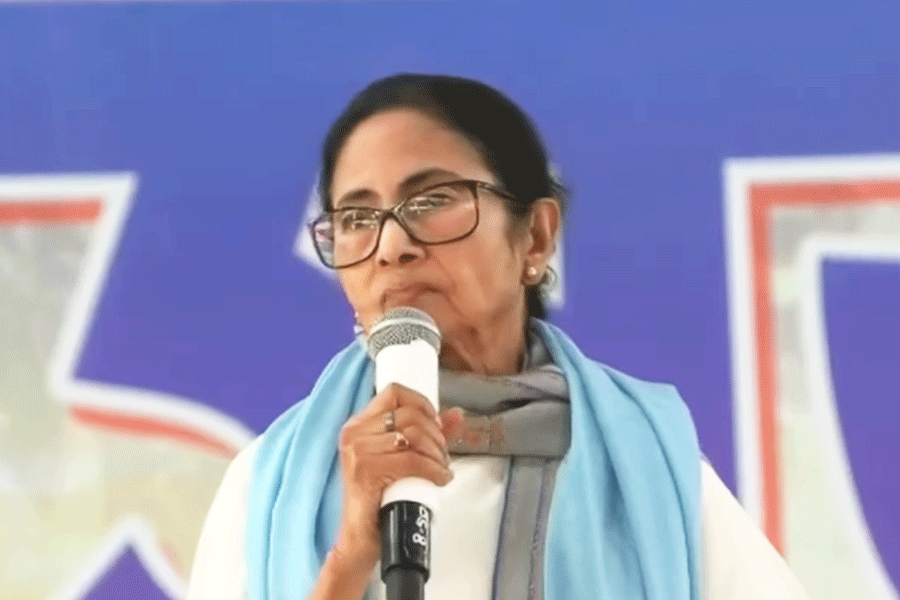|
|
| Need for united effort |
Wetlands International’s recognition of the East Calcutta wetlands as an ecosystem of international importance could not have come at a more critical time. From Jairam Ramesh to Pramod Mahajan, economists and politicians of varying hues are descending on Calcutta to teach the ruling Marxists on how to be on the fast track or sell the city’s image. And, given the kind of economic crisis West Bengal is currently facing, all of them are finding ready and patient ears. However, as the government gears up to catch the late train to privatization and corporate investment, issues like environment have taken a backseat.
With a river on the west and teeming land-choked suburbs on the north and south, Calcutta’s only open space is the vast wetlands and water bodies lying on the east. The last couple of decades have seen rapid urbanization in this area, and now, entrepreneurship being the new mantra of the Marxists, everybody is eyeing their piece of cake here. From urban centre to leather complex, from aqua parks to IT villages, a host of new projects are on upon these wetlands or the adjoining areas.
Without doubt, many of them would endanger the wetlands’ delicate ecosystem. That would not only be catastrophic for the city’s health because it hinges on these wetlands, but would destroy a most unique integrated system that cannot be found anywhere among the world’s great cities.
The recognition of the Wetlands International — also known as Ramsar status because of a historic wetlands convention signed in the Iranian city of Ramsar — is surely a judgment that will highlight the importance of East Calcutta wetlands in global forums. But given that the Ramsar recognition has no legal binding, how far it will be able to protect these wetlands from the jaws of “development” is open to debate.
Will the state government, which had been trying to get this recognition for quite some time now, prove its sincerity by putting a brake on the ecologically harmful projects? The initial reaction of the state environment minister, Manab Mukherjee, is refreshingly welcome. He has acknowledged that there had been pressure from various lobbies to gain access to the wetlands. “This (Ramsar status) will help us shut the doors firmly on them.” But will his comrades in other departments, especially in the departments of industries, urban development and housing, share his enthusiasm? Given the kind of discordant notes that emanate from the Writers Buildings from time to time, one cannot be sure.
But before getting into that muddle, let us take a look at the stretch of marshy lands dotted with water bodies on the east of E.M. Bypass and try to find out what is so unique about them.
At 12,500 hectares, the East Calcutta wetlands are not only the world’s largest wetlands linked to an urban area, but also a uniquely evolved system that receives the city’s sewage and returns it in the form of oxygen, fresh fish and vegetables. While the Calcutta municipal corporation dumps around 3,000 tonnes of solid waste daily, the amount of sewage discharged is more than 2,000 tonnes of suspended solids per day as per the estimate of the National Environmental Engineering Research Institute. The East Calcutta wetlands make good use of these unusual resources and produce approximately 150 tonnes of fresh vegetables and 25 tonnes of fish daily. In the process, it also generates gainful employment for nearly 20,000 families.
Thus, the East Calcutta wetlands sustain the world’s oldest and largest integrated resource recovery system, in which both agriculture and aquaculture use waste water nutrients. Purifying the waste water through mechanical means would not only cost millions of rupees in terms of plant installation and maintenance, but, according to a 1978 World Bank report, such technologies cover only 6.5 per cent of the population in a developing country.
For the past couple of decades, thanks to the efforts of environmentalists and some non-government organizations, the significance of these wetlands in relation to the city’s urban health has been highlighted. Unfortunately, these decades have also seen a most frenetic urban growth in this area, often flouting all environmental norms.
A number of factors are responsible for this. But one important fact is that the cause of the East Calcutta wetlands has never been effectively brought into the public sphere. No rallies or marches worth remembering have ever been organized; no political parties have included it in their agenda. The media attention too has often been inadequate. Famed as they are for their cultural ticklishness, Calcuttans have never been too concerned about environment. A city that can turn its back on the great and majestic river that had mothered it, as Charles Correa has pointed out time and again, is not supposed to fret about the life of a stretch of wetlands that sustains it.
In the absence of popular attention, the movement for the protection of wetlands has sometimes floundered and got into the hands of vested interests. Rich bhedi-owners have masqueraded as green activists to stop government acquisition of their lands for better deals later with private promoters. In February last year, the tanners of Calcutta petitioned the Supreme Court that the new Calcutta Leather Complex near Bantala, where they are to be relocated, is an environmental threat to the Sunderbans and the wetlands east of the city. Thus, the greatest pollutants in the heart of the city turn into environmentalists to suit the need of the hour.
Although environmental studies have become a mandatory subject in formal education, the East Calcutta wetlands have not yet received the kind of academic attention they deserve. The garbage gardens and fish farms are not only a living laboratory of sustainable development, but they provide an alternative and viable model for waste disposal that can be copied in other towns and cities. For that to happen, the task will be to record the traditional knowledge of the fishermen who, equipped with their organs of taste and smell, engineer the complex process of waste water purification. But perhaps, given the kind of elitism that pervades our education system, it would be too much to ask a university professor to take lessons from an illiterate farmer.
But even if we leave aside the material aspects, the cultural and political dimensions of East Calcutta wetlands cannot be overlooked. At a time when opening up of the economy has given rise to conspicuous consumption patterns, with their harmful effects on the biosphere, East Calcutta wetlands show the way to a sustainable future.
Everyday, as corporation payloaders dump mountains of garbage, armies of ragpickers descend on them and separate the inorganic from the organic materials. They collect about 30 kinds of items, including glass, metal, rubber and various types of plastic, that feed a vast recycling industry spread across the adjoining districts. After their work is done, the organic waste is left to turn into precious compost which produce abundant green vegetables at little extra cost. Although studies have proved that fish and vegetables grown in the wetlands region are absolutely safe for human consumption, these scavengers — mostly young boys and girls — are daily exposed to great health hazards. Unfortunately, the city has failed to reciprocate and give them what is their due — namely, education, healthcare and social security.
By the first quarter of this century, nearly 54 per cent of the third world population will live in urban areas, and the Ramsar recognition of the East Calcutta wetlands must be seen with that perspective in mind. All efforts must be made to protect this area and its unique ecosystem, but the need of the hour is a radical change of perceptions. We must learn to see the East Calcutta wetlands not as the city’s seamy underbelly but as its vital organ, not an eyesore to be hidden from visitors but a unique asset to be proudly showcased.











